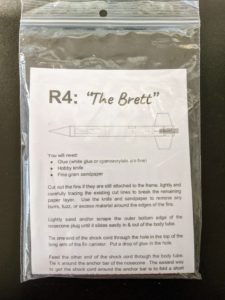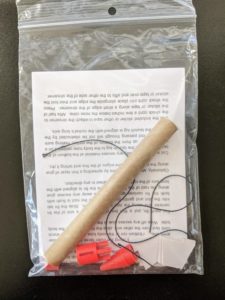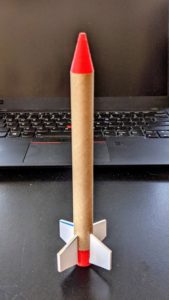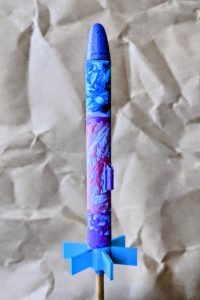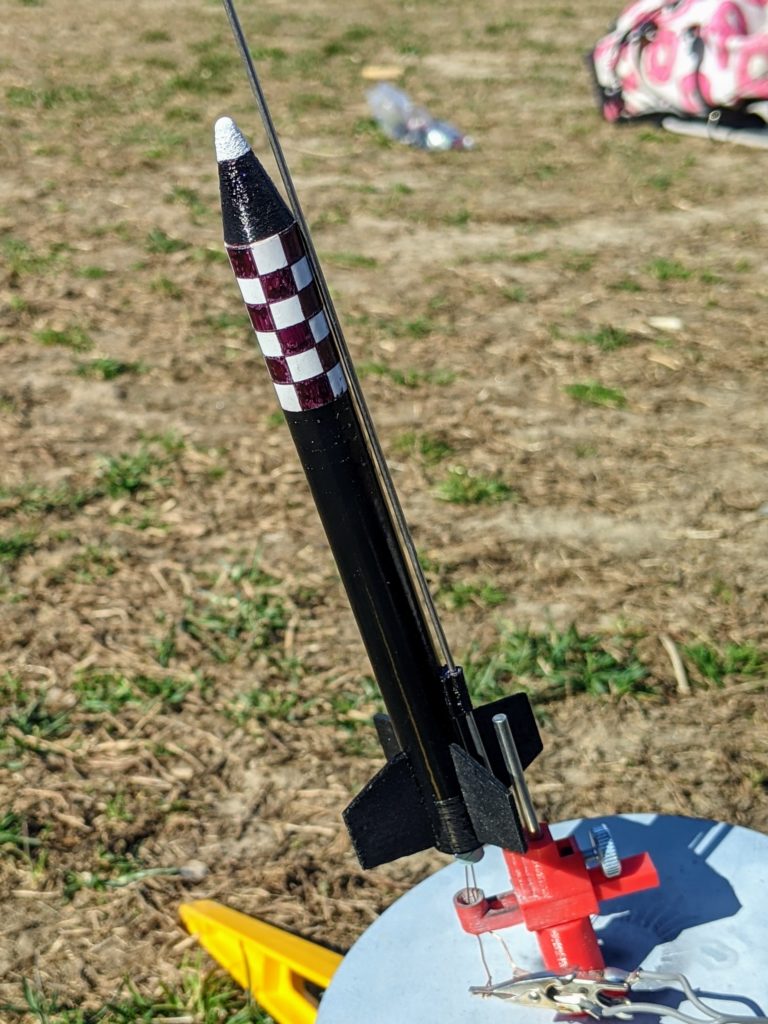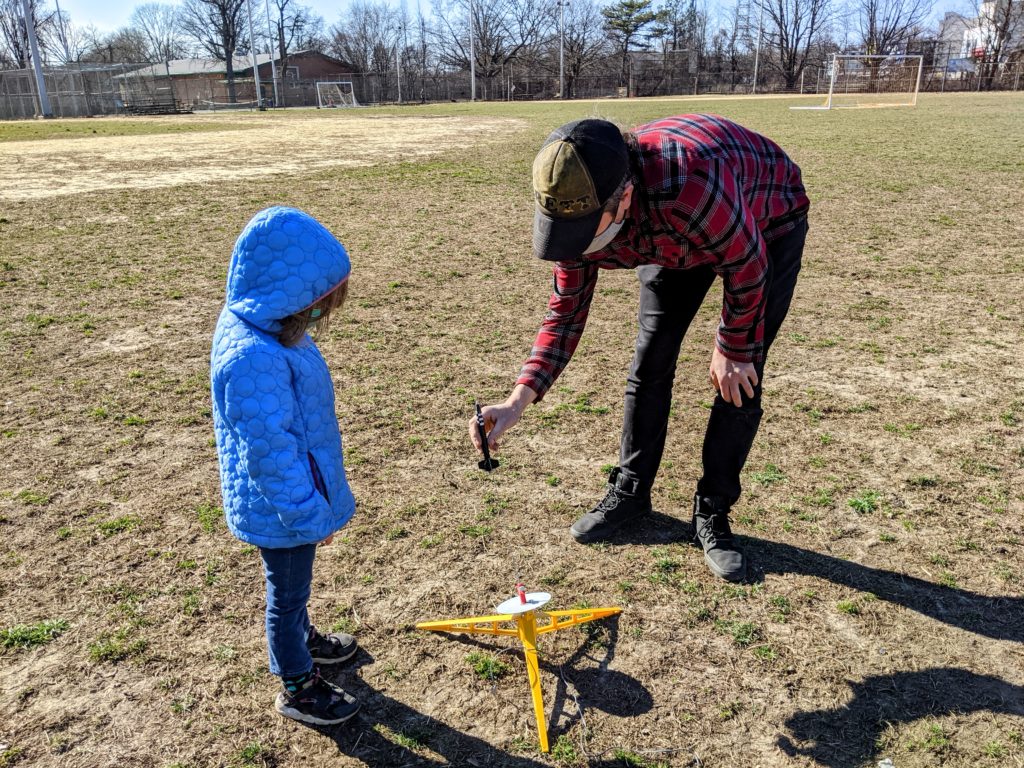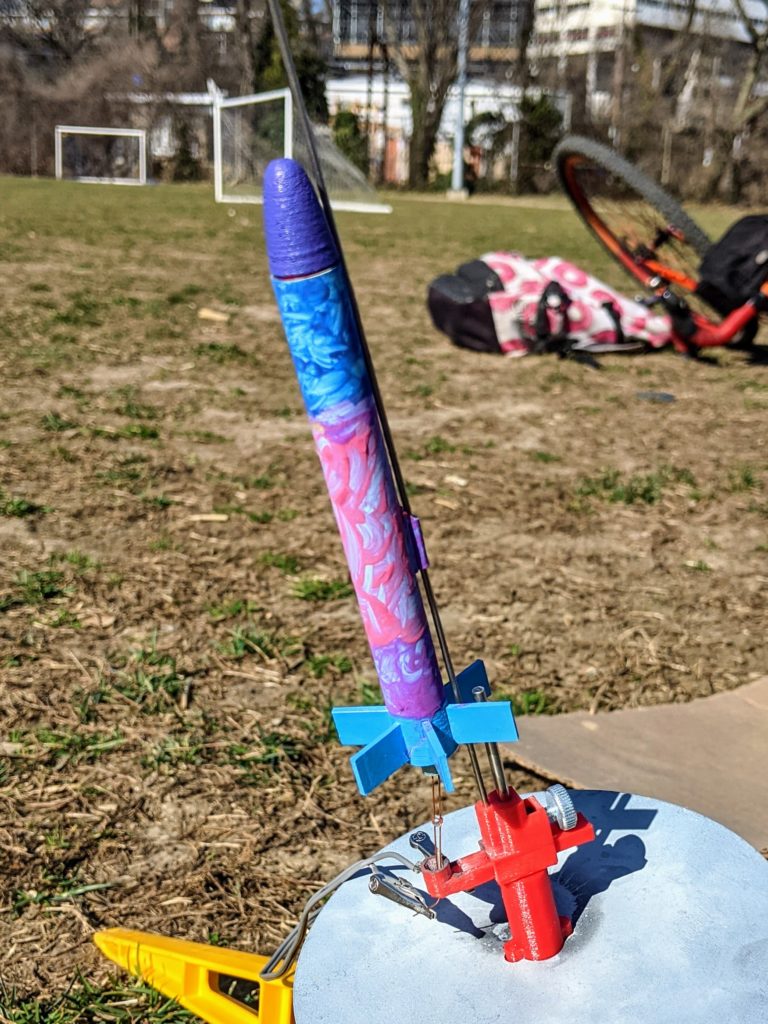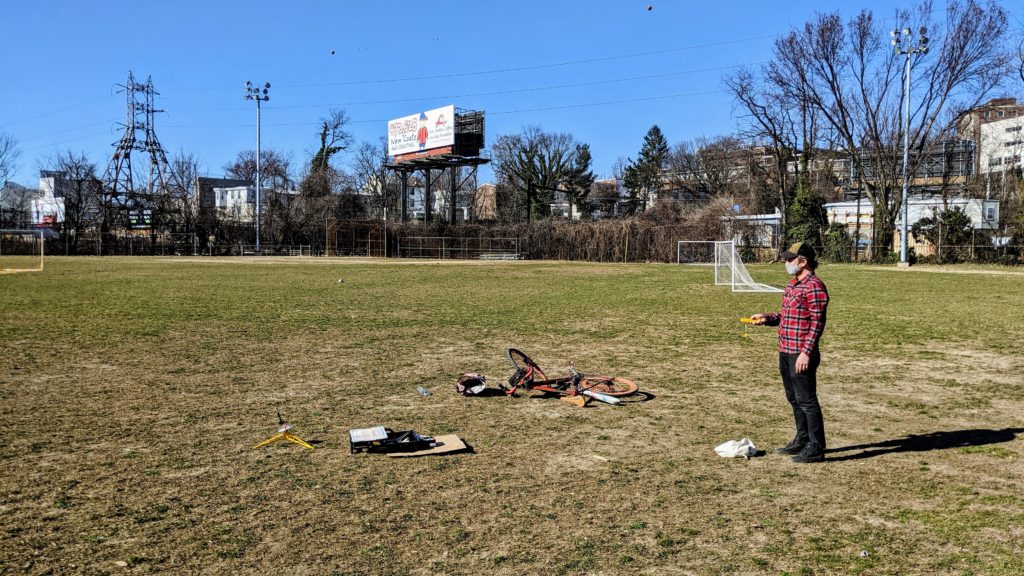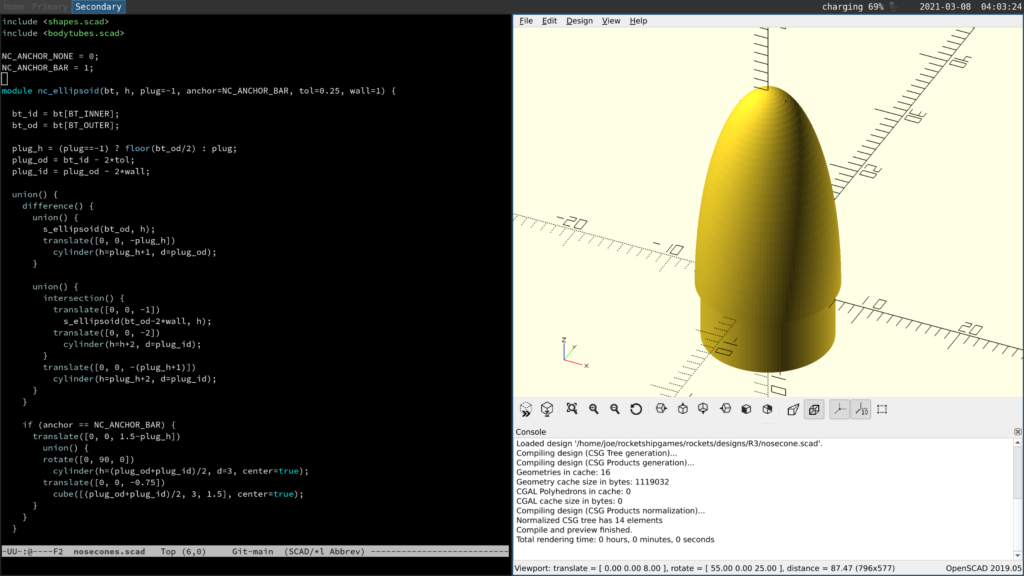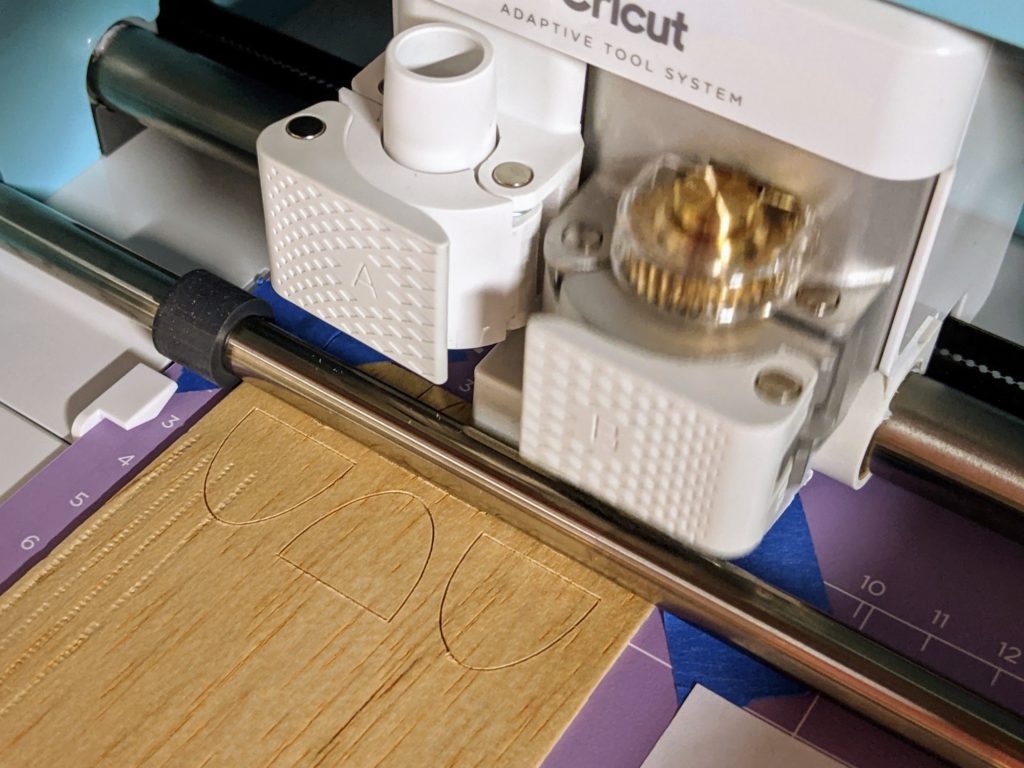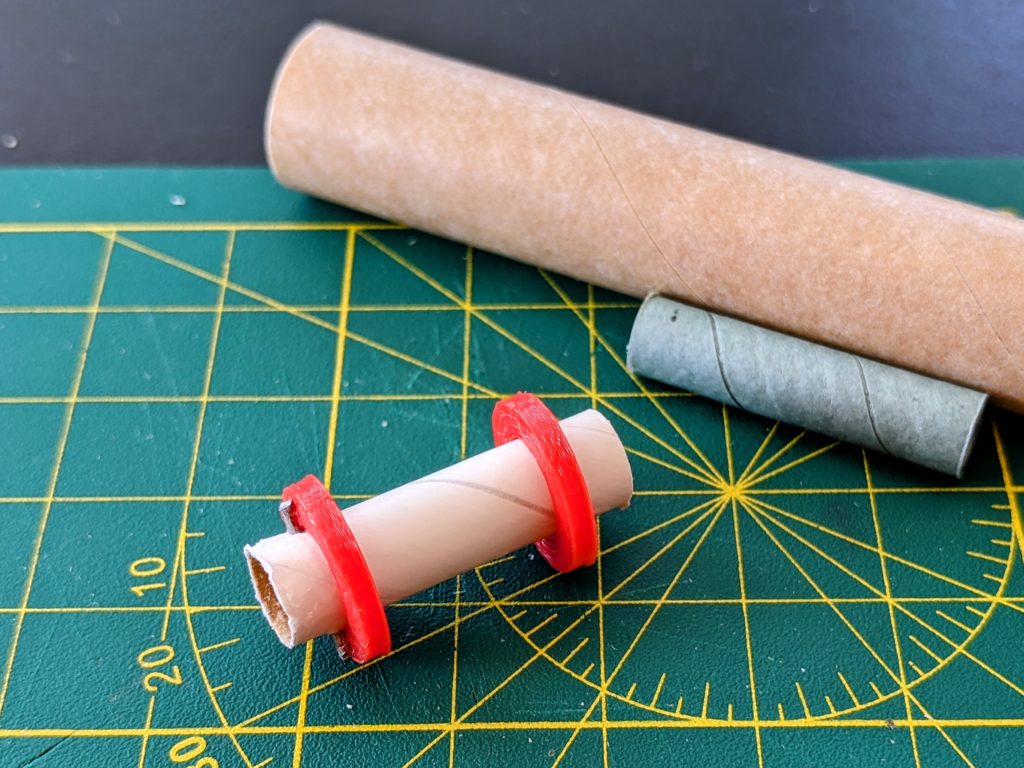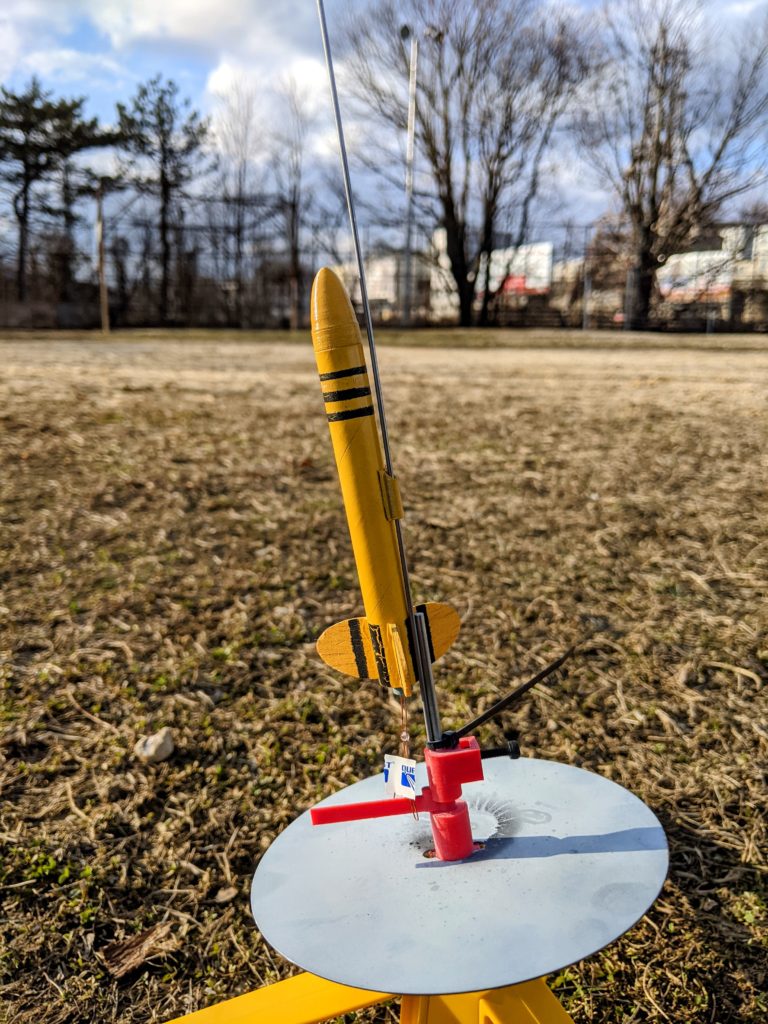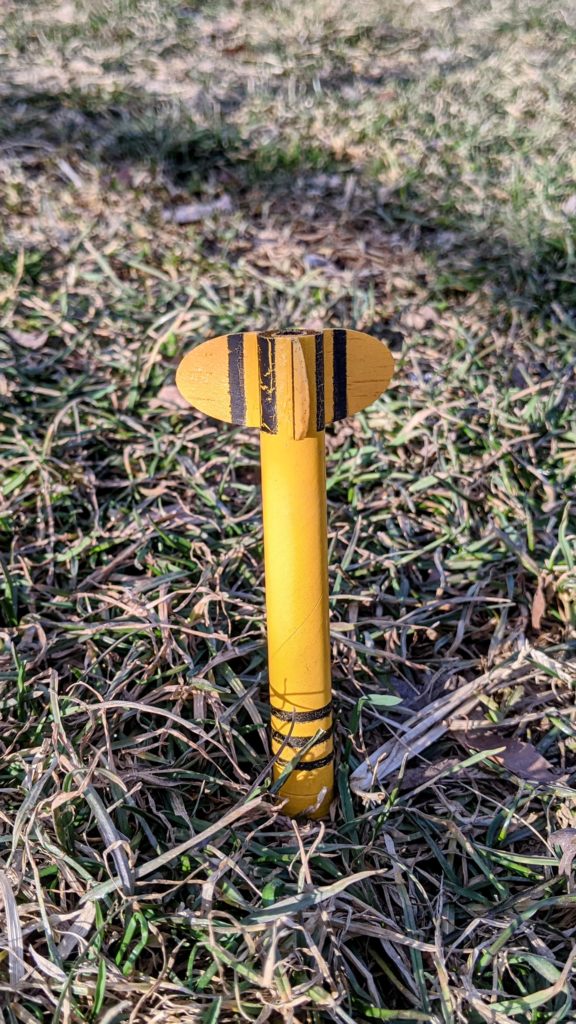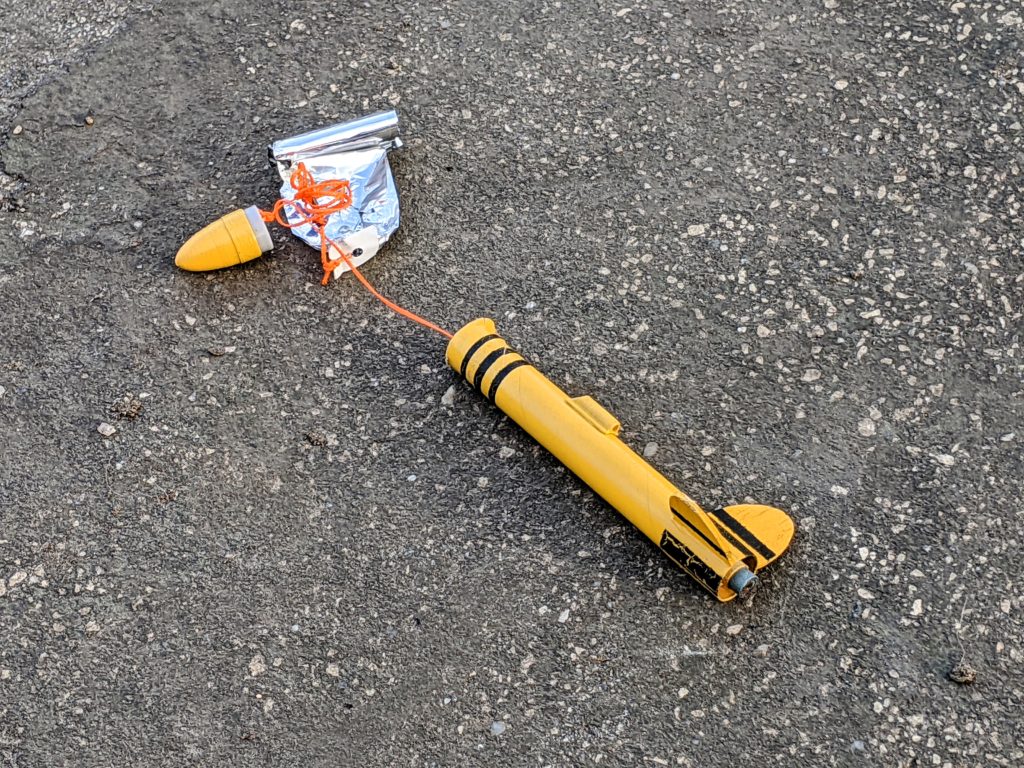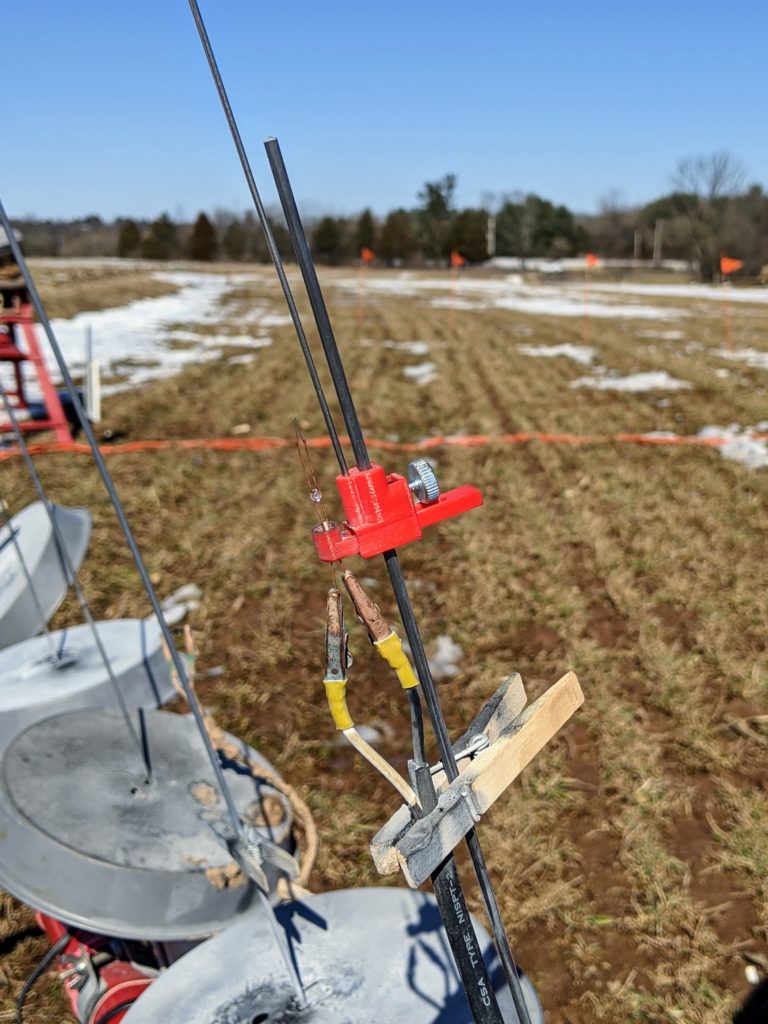This past weekend we made our own micro-rocket kits to build & launch in the neighborhood. I’ve been working on a design framework and CAD tools to produce little rockets for which Alice can do a bunch of the construction herself. There’s only a few steps, the fins are self-aligning, etc.. Besides basics like tube and shock cord they’re made of 3D printed and CNC cut parts. Alice chose parameters for her rocket (number & shape of fins, etc.), R6, and we worked together to tune them in a simulator to get the dynamics right. She made a schedule for the morning to get it painted in time to dry before the launch and it came out excellent.
Then we put together a kit, R4, for Brett and I literally ran it over to his house so he could furiously put it together for the planned launch two hours later (the assembled one pictured here is my copy).
Brett’s rocket also came out amazing! It flew as well as it looked too, with a straight ascent, clean streamer deployment, and soft landing. Alice also had a good flight with her new rocket, and it was unfazed by colliding with a fence after drifting a bit.
Model rocketry is a socially acceptable and even popular hobby.
Unfortunately we lost two rockets this day. At the PARA launch we had been gifted two micro-rockets by a guy to whom I had given one of my custom launch pad adapters. One was a little glider that looped around and around beautifully in the changing winds but flew at least a quarter mile away and most likely landed on the rooftops it was last seen over. The other, just barely seen here as a small yellow line at the center of the image, was an excellent scratchbuilt micro-Skywriter, a faithful cardstock mimicry of a classic #2 pencil. It flew incredibly high for the tiny MicroMaxx motor and drifted on the descent into the rocket eating maw of a high tree. An extensive search for the glider turned up nothing, but Alice is keen to check on the pencil next time we go to the field.

